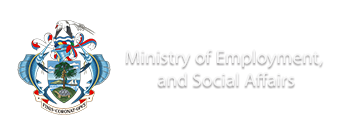Labour Market Statistic Update Thursday 30 July 2020 -Statistics show rise in unemployment
The country’s unemployment rate for the first quarter of 2020 (January to March) was 4.8%, compared to 2.3% for the last quarter of 2019 (October to December), according to figures released by the National Bureau of Statistics (NBS).
Two thousand three hundred and seventy-four (2374) people (including foreigners living in households) have been classified as unemployed for the reporting quarter.
It was Maria Payet, principal statistician (social statistics) at NBS, who made the statement yesterday morning during a briefing with the press at the Ministry of Employment, Immigration and Civil Status (immigration department) at Independence House on the results of the quarterly labour force survey (Q1 2020), with regard to the labour market statistics.
Also present was Susan Morel, chief policy analyst in the department of employment.
Mrs Payet described the increase in unemployment rate from 2.3% for the last quarter of 2019 to 4.8% for the first quarter of 2020 as “very substantial” given the fact that the unemployment rate had usually stayed below 4% as of 2018.
She claimed that the increase in unemployment during the first quarter of any year usually results from the number of secondary and post-secondary students seeking employment after their studies.
She noted that the unemployment rate for males for the fourth quarter (Q4) of 2019 was 2.8% and 1.7% for females. As for the first quarter (Q1) of 2020, the unemployment rate for males was 3% and 4.4% for females.
She also noted that it was only in 2018 that the unemployment rate, in a rare case, had reached a 5% increase in the country.
As for the unemployment rate among the youth (15 years old to 24 years old), Mrs Payet noted that it stood at 20.4% for the first quarter of 2020. It is the highest rate ever recorded for the youth sub-group since the start of the quarterly labour force survey in 2014.
She described the situation among the youths as “very alarming”.
With regard to informal unemployment, the rate stood at 15.5 % in the fourth quarter of 2019 rising to 17.3% in the first quarter of 2020.
The most common method of job search in the fourth quarter of 2019 was applying to prospective employers, whereby 57.5% of jobseekers sought jobs using this method. However, a shift was observed for the first quarter of 2020 where registering with employment centres was the most common method for searching for a job. This means that in Q1 2020, fewer people applied for jobs by sending job application forms or CVs directly to workplaces. Instead, more people are registering with the employment department in order to find jobs.
It was also pointed out that the ‘accommodation and food services’ industry had always employed the second highest number of people. However, this trend has now changed in Q1 2020, as it becomes the industry employing the fifth highest number of people.
Speaking on trade union density rate, Mrs Payet said that more people (6.1%) were seeking to join trade unions in the first quarter of 2020 compared to just 2.6% in the fourth quarter of 2019. She claimed that the results of the second quarterly labour force survey 2020, which will be announced by end of September, will determine the real effect of the coronavirus (Covid-19) on the labour market.
On her part, Ms Morel said that the ministry was expecting this rise in unemployment rate for the first quarter of 2020 as it was the normal trend during that period whereby many secondary and post-secondary students registered with the employment department are in search of a job after their studies.
She noted that with the youth being most affected, the employment department has put in place various policies, programmes (Unemployment Relief Scheme, Skills Development Programme and My First Job) and activities (recruitment fairs) for school leavers among other youths.
She noted that 570 students registered for the ‘My First Job’ programme in the first quarter of 2020 and 260 on the ‘Skills Development Programme’.
Patrick Joubert



